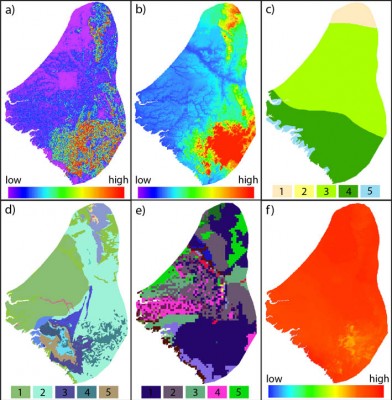New paper on the biogeography of the Papio baboons selected as Editor's Choice by Folia Primatologica

A new paper by Isabelle Winder has been published in the journal Folia Primatologica. The paper uses GIS techniques to explore the environments occupied by different baboon species in Africa, with the aim of establishing whether there are differences in their habitat preferences and, if so, how those differences might affect their ecology. It is part of a mini special issue on 'Primate Biogeography'.
Baboons may seem an odd subject for DISPERSE, which after all is focused primarily on hominins. Understanding our ancestors as parts of ancient ecosystems, however, often relies upon comparisons with other species. The baboons are large-bodied, relatively large-brained, ecologically flexible primates and a useful source for such comparative data – in fact, it has been suggested that the australopiths and members of early Homo might have shared many adaptations with modern baboons. So by understanding in more detail the ways that baboons interact with their environments today, we can begin to build better models of how our ancestors would have lived.
The publication details are: Winder, I.C. 2014. The biogeography of the Papio baboons: a GIS-based analysis of range characteristics and variability. Folia Primatologica 85(5), 292–318.
The paper has been selected as the Folia Primatologica 'Editor's Choice' for the issue, which means it is available free from the journal webpage






